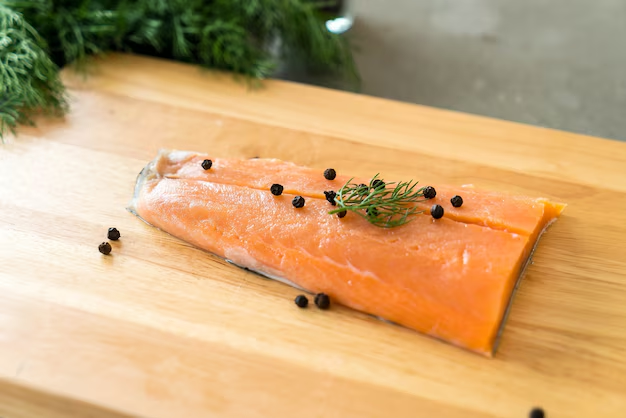How Fresh is Your Crab? A Practical Guide to Storing Crab in the Refrigerator
Crab is a cherished delicacy in many cuisines. Its sweet, succulent meat brings joy to our palates, whether steamed, boiled, or transformed into a delightful dish. But like any seafood, crab is highly perishable, and knowing how to store it properly is crucial to preserving its freshness and ensuring safety. This article will delve into the nitty-gritty of storing crab in the refrigerator, helping you understand how long it stays good, common pitfalls to avoid, and tips to maximize its shelf life.
🦀 How Long is Crab Good in the Refrigerator?
The shelf life of crab in the refrigerator can vary based on several factors, including the type of crab, how it is processed, and storage methods. As a rule of thumb:
- Cooked Crab: Generally stays fresh for about 3 to 5 days when stored in an airtight container.
- Fresh, Live Crab: Should ideally be cooked on the same day but can survive a few hours in the fridge if stored properly.
- Imitation Crab: Lasts longer, around 5 to 7 days, due to preservatives used in the processing.
Key Factors Affecting Shelf Life
- Temperature Control: Always store crab at a consistent fridge temperature, ideally below 40°F (4°C).
- Quality of Crab at Purchase: Freshness at the time of purchase significantly extends its shelf life.
- Storage Methods: Using airtight containers or vacuum sealing can prevent exposure to air and bacteria.
📦 Best Practices for Storing Crab
Proper storage is crucial to maintaining the quality and safety of crab. Here are some best practices:
Fresh, Live Crab
- Keep Crab Damp: If you plan to cook live crab the same day, keep it damp and cool in the refrigerator, well away from direct air circulation. Cover with a wet cloth or damp newspaper.
- Avoid Immersion in Water: Unlike fish, crabs do not survive well when submerged in freshwater as it affects their gills.
Cooked Crab
- Airtight Containers: Place cooked crab in airtight containers to avoid exposure to air, which can speed up spoilage.
- Separate Meat and Shells: If feasible, separate the meat from the shell for better storage efficiency. It allows for a more compact storage solution and reduces the risk of surface contamination.
- Refrigerate Promptly After Cooking: Do not leave cooked crab out for more than two hours at room temperature; refrigerate it immediately to maintain freshness.
Imitation Crab
- Original Packaging: Keep the crab in its original packaging if sealed, storing it in the fridge as soon as possible.
- Once Opened, Airtight is Key: After opening, place imitation crab in a sealed container to protect it from moisture and contaminants.
❇️ Boosting Crab's Shelf Life: Practical Tips
Enhancing the longevity of crab isn't just a matter of where you store it but also how you treat it. Here are some proven strategies:
- Immediate Refrigeration: Always place crab in the fridge promptly after purchase or cooking. This limits bacterial growth and maintains quality.
- Vacuum Sealing: Utilize vacuum sealing to remove excess air, significantly extending the shelf life of both cooked and fresh crab.
- Avoid Frequent Temperature Changes: Do not take crab in and out of the refrigerator frequently, as fluctuating temperatures can accelerate spoilage.
- Cross-Contamination Prevention: Store crab away from strong-smelling items to prevent it from absorbing unwanted odors.
🤔 How to Tell If Crab Has Gone Bad
Even with careful storage, crab might eventually spoil. Here are some telltale signs:
- Off-Putting Odor: A sour, ammonia-like or fishy smell indicates spoilage.
- Color Changes: Discolored flesh or shells can signal decay.
- Texture Alterations: Sliminess or mushiness is a strong spoilage indicator.
📝 Summary Table
To synthesize the critical points for easy reference:
| Crab Type | Refrigerator Shelf Life | Best Practices | Spoilage Signs |
|---|---|---|---|
| Fresh, Live | Cook immediately, if possible | Keep in damp, cool conditions. Avoid freshwater immersion. | Ammonia smell, discoloration. |
| Cooked | 3-5 days | Use airtight containers. Refrigerate promptly. Separate meat from shells. | Sour smell, slimy texture. |
| Imitation | 5-7 days | Store in original packaging or airtight containers once opened. | Off-odor, unpleasant taste. |
⚠️ Cautionary Notes: Understanding Risks in Improper Storage
While proper storage significantly reduces health risks, consuming spoiled crab can lead to unpleasant consequences. Spoiled seafood, including crab, can harbor bacteria and parasites that may induce foodborne illnesses.
- Food Safety First: Always prioritize safety by consuming crab within its recommended refrigerator shelf life.
- Eating Cold Crab: If consuming chilled crab, ensure it's within the safe storage window—you'll want to avoid any surprises.
🎯 Final Thoughts
Mastering the art of storing crab properly can help preserve its delightful taste and ensure you enjoy every bite safely. Whether you're a seafood connoisseur or an occasional gourmand, understanding how long crab lasts in the refrigerator and the best storage practices can make a world of difference in your culinary experiences. With knowledge and care, your crab dishes will remain fresh, flavorful, and safe to eat. Don’t let those prized crustaceans go to waste—store wisely, and savor the exquisite taste they offer!
By following these guidelines, you can enjoy crab dishes that are both delicious and safe, adding a delightful elegance to your meals. Bon appétit!
